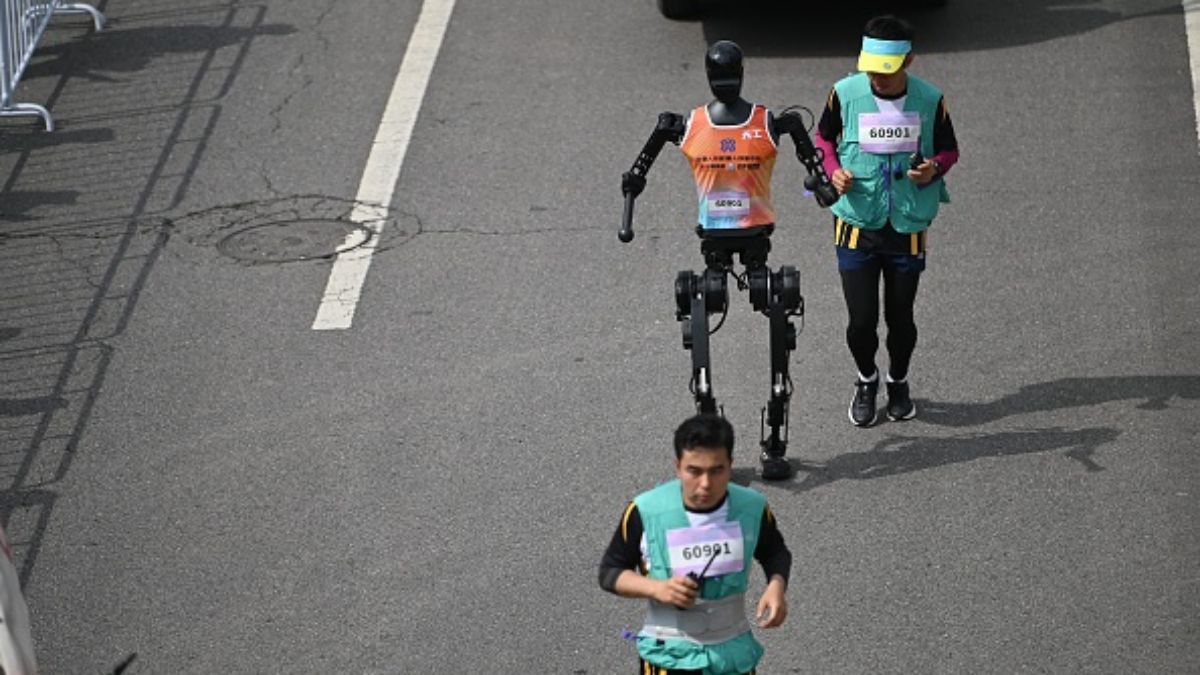Beijing witnessed a historic event the world’s first Humanoid Robot Half-Marathon, where machines ran alongside humans in a symbolic convergence of sport and technology. Held under global media glare, the event showcased the significant strides being made in humanoid robotics and artificial intelligence. While human runners stuck to standard race norms, the robot participants followed specially adapted rules with engineering support. Despite mechanical missteps and frequent pit stops, the event sparked intense curiosity, optimism, and debate around the future role of robots in society.
Key Highlights of the Event
Date & Venue
- Held on April 19, 2025, in Beijing, China.
- Billed as the world’s first humanoid robot half-marathon.
Participants
- Included human runners and humanoid robots of varying designs and sizes.
- Robots ranged from under 4 feet (120 cm) to 1.8 metres (5.9 ft) in height.
- 20 engineering teams fielded robot competitors.
Course Layout
- Separate lanes for humans and robots, divided by a parallel barrier for safety.
- Robots required battery-change pit stops, unlike human runners.
Performance Metrics
- Fastest human finished in 1 hour 2 minutes.
- Fastest robot, “Tiangong Ultra”, finished in 2 hours 40 minutes.
- Robots awarded in categories such as best gait design, endurance, and innovative form.
Engineering Challenges
- Some robots needed support from human handlers.
- Others crashed or toppled, revealing challenges in balance and coordination.
Public Reaction
- Mixed reception; some praised it as a glimpse into AI evolution.
- Critics questioned the validity of marathon racing as a robotics benchmark.
Aesthetic & Humanness
- Many teams emphasized “humanness” – dressing robots in shoes, boxing gloves, headbands.
- A standout robot featured a feminine appearance, could wink and smile, adding a layer of anthropomorphism.
Policy & Industrial Context
- Reflects China’s broader vision to lead in AI and robotics as part of economic growth strategies.
- Raises ethical and industrial questions about the integration of AI into daily life.
| Summary/Static | Details |
| Why in the news? | Humanoid Robots Compete in Beijing Half-Marathon |
| Event Name | Humanoid Robot Half-Marathon |
| Date & Location | April 19, 2025, Beijing, China |
| Robot Participants | 20 teams; robots between 120 cm and 180 cm |
| Human vs Robot Setup | Separated by barrier; humans under standard rules, robots with pit stops |
| Fastest Human Time | 1 hour 2 minutes |
| Fastest Robot Time | 2 hours 40 minutes (Tiangong Ultra) |
| Engineering Elements | Battery changes, support teams, crash handling |
| Awards Given | Best gait design, endurance, innovative form |
| Public Reaction | Mixed – optimism from AI community, skepticism from critics |
| Robot Design | Highlights Shoes, boxing gloves, headbands; some human-like expressions |
| Broader Implications | Pushes AI visibility; raises questions on industrial relevance |



 India Plans New Antarctic Station Maitri...
India Plans New Antarctic Station Maitri...
 India Launches Its First 1.0 GHz, 64-bit...
India Launches Its First 1.0 GHz, 64-bit...
 ISRO Projects Seven Launches Including U...
ISRO Projects Seven Launches Including U...







